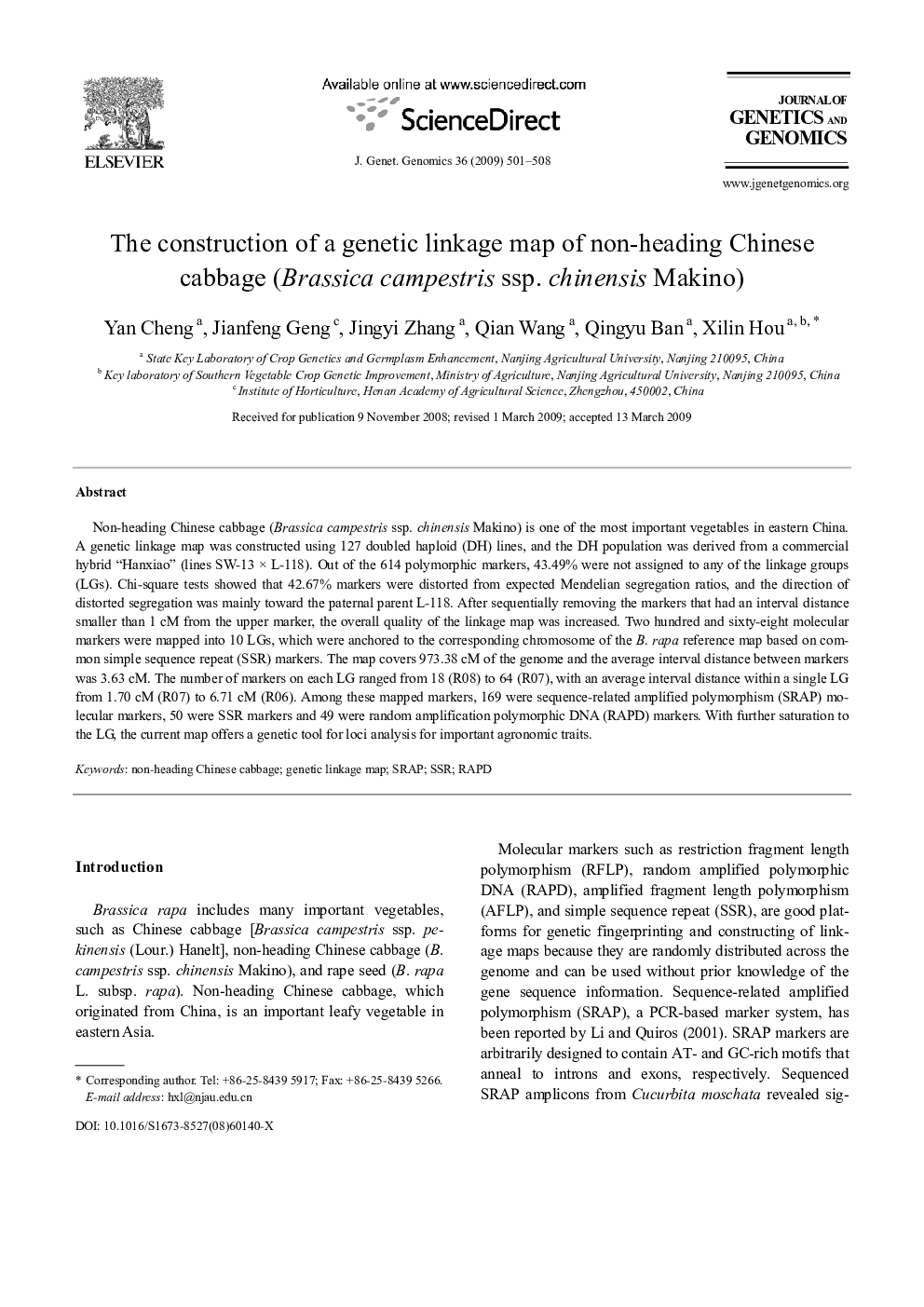| Article ID | Journal | Published Year | Pages | File Type |
|---|---|---|---|---|
| 2787720 | Journal of Genetics and Genomics | 2009 | 8 Pages |
Non-heading Chinese cabbage (Brassica campestris ssp. chinensis Makino) is one of the most important vegetables in eastern China. A genetic linkage map was constructed using 127 doubled haploid (DH) lines, and the DH population was derived from a commercial hybrid “Hanxiao” (lines SW-13 × L-118). Out of the 614 polymorphic markers, 43.49% were not assigned to any of the linkage groups(LGs). Chi-square tests showed that 42.67% markers were distorted from expected Mendelian segregation ratios, and the direction ofdistorted segregation was mainly toward the paternal parent L-118. After sequentially removing the markers that had an interval distancesmaller than 1 cM from the upper marker, the overall quality of the linkage map was increased. Two hundred and sixty-eight molecularmarkers were mapped into 10 LGs, which were anchored to the corresponding chromosome of the B. rapa reference map based on common simple sequence repeat (SSR) markers. The map covers 973.38 cM of the genome and the average interval distance between markerswas 3.63 cM. The number of markers on each LG ranged from 18 (R08) to 64 (R07), with an average interval distance within a single LGfrom 1.70 cM (R07) to 6.71 cM (R06). Among these mapped markers, 169 were sequence-related amplified polymorphism (SRAP) molecular markers, 50 were SSR markers and 49 were random amplification polymorphic DNA (RAPD) markers. With further saturation tothe LG, the current map offers a genetic tool for loci analysis for important agronomic traits.
